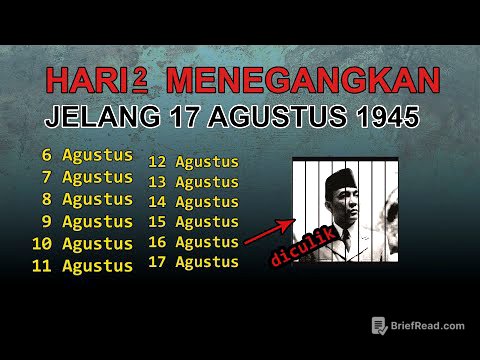TLDR;
The Mumbai-Ahmedabad bullet train project is a large-scale infrastructure endeavor that includes viaducts, river and steel bridges, tunnels, stations, and rolling stock depots. It uses advanced construction techniques like full span girder launching and the New Austrian Tunneling Method. The project aims to improve connectivity, create jobs, and stimulate economic growth by integrating local art and culture with advanced technology.
- Full span girder launching is used to speed up viaduct construction.
- The project includes India's first undersea rail tunnel.
- Stations are designed to showcase local art and culture.
Project Overview [0:08]
The Mumbai-Ahmedabad bullet train corridor, spanning 508 km, includes 465 km of viaduct, 25 river bridges, 28 steel bridges, a 21 km tunnel, eight mountain tunnels, 12 stations, and three rolling stock depots. To accelerate viaduct construction, the full span girder launching technique is being used for the first time in India, which is 10 times faster than conventional methods. Each full span box girder is 40 m long and weighs about 970 metric tons.
Viaduct Construction [0:32]
Heavy indigenous machinery is used for constructing the viaduct. A 1100-ton capacity launching gantry lifts the girder with precision and places it between two piers. Using full span girder launching technology, a 40 m long bridge is completed in just 16 hours. Nearly 325 km of viaduct has been completed, with over 4 lakh noise barriers installed on both sides. Overhead electrification masks are being installed on the viaduct for the first time in India, and the JSLab ballastless track system is being implemented with fully mechanized track installation using machinery designed to Japanese specifications.
Bridges Construction [2:00]
Construction of bridges across 25 rivers is progressing rapidly. Additionally, 28 steel bridges are being built to cross highways, expressways, and railway lines along the corridor. The fabrication of these bridges is being carried out in six dedicated workshops located across different states of India.
Tunneling [2:24]
The bullet train route features eight mountain tunnels constructed using the New Austrian Tunneling Method. A key part of the project is the 21 km long Mumbai tunnel, which includes a 7 km section beneath Thane Creek, marking India's first undersea rail tunnel connecting Mumbai's Bandra Kurla complex to Shilphata in Thane. This tunnel uses a dual technique approach: 5 kilometers using the New Austrian Tunneling Method and the remaining 16 km using tunnel boring machines with a 13.6 m cutter head, the largest ever used in an Indian railway project.
Depots and Stations [3:15]
Along the corridor, three rolling stock depots are under construction. Each of the 12 stations along the bullet train route is designed to showcase the local art and culture of its city while integrating world-class technology and facilities. In Mumbai, the underground bullet train station at Bandra Kurla complex is being built nearly 32 m below ground, equivalent to a 10-story building in depth. The multimodal transport hub near Sabarmati bullet train station, inspired by the Dandi March movement, has been completed and will provide seamless connectivity to the station, Western Railway, the metro, and the BRTS corridor.
Impact and Vision [4:21]
Powered by Japan's expertise and India's vision, the Mumbai-Ahmedabad bullet train project is creating employment opportunities, fostering skill development, and boosting economic growth, paving the way for a faster and more connected India.









